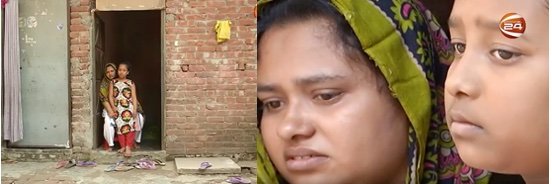“We are making movies”
Bringing Story-Telling Techniques to Investigative TV
in bangladesh
In March 2019, Julian Sher worked with the FOJO Media Institute in Sweden and MRDI in Bangladesh to train investigative journalists at Channel 24. This is one of his reports.
____________
“Searchlight” is a hard-hitting weekly investigative TV program on Channel 24, one of several good investigative TV shows in Bangladesh. Some of its powerful 30-minute episodes have exposed a man wrongly imprisoned for crimes he did not commit to corruption in everything from university admissions to disaster blanket relief programs.
The challenge is in learning how to tell these complicated investigations in a dramatic visual way: Not in a boring print style and not like straight TV news. Our goal in the first two weeks of training in late March of 2019 was to change the visual look of the show so that it looks and feels totally different from everything else viewers see in the all-news Channel 24.
A basic starting point was characters: they need to be seen to be going on a journey and we need to film meaningful setups or establishing scenes of each of them. Too often many of the people in Searchlight stories simply appear behind huge desks.
When we interviewed a deputy police commissioner the crew again wanted to film him behind his huge desk. But as I pointed out, his job is to protect the people, not his desk. So we stood him in the courtyard of his police station, with the bustling traffic of Old Dhaka behind him (see photo on the left)
We set up a chemicals and fire expert not behind his desk but in in his lab with his equipment (see the photo on the right).
And then for the interview, a simple switch from having him look camera-left instead of camera-right produced a much more interesting shot of his equipment behind him rather than empty space. Compare the poor framing on the left to the more engaging framing on the right:
When you have a character who will make multiple appearances in your documentary, you need to think about what will the first shot – how do viewers meet the character – and what will be the final goodbye or “sunset” scene. In filming a mother of a young girl who had lost her husband in a tragic fire that killed 70 people, we got heart-breaking shots of her with her daughter in the door frame of her little home:
For a middle scene, we filmed her listening as a relative frantically searched for news after the fire (see photo on the left)
For the climactic tearful scene when she learns the fate of her dead husband, we filmed wide shots and closeups of the mother and daughter:
Finally, we filmed her and her daughter walking alone down an alleyway, knowing they will never see their loved one again
At one point during our two weeks of intense filming, debate and discussion, one of the participants asked: “Are we a news show? Are we doing news or movies?”
We went to the Netflix website. After all, this is where more and more people are turning to watch “television.” Like YouTube and other video platforms, more people are watching TV on a “screen” but not necessarily on old fashioned TVs. In Netflix, under the “Movies” section there are categories for Action and Comedies and all kinds of Hollywood and Bollywood movies -- all of them fiction of course. But then there is a very popular category for “Documentary” – all of them non-fiction, truth, news, documentaries about real events. This, I pointed out, is where investigative TV lives these days … and where it will grow in the future.
So we are making “Investigative TV News Documentary Movies.” Note how the first four words are adjectives that describe what we do: movies. “Investigative” because we probe. “TV” because we work for a broadcast network. “News” because we don’t do sports or entertainment and we seek to break stories and make headlines. “Documentary” because we are truth-tellers, relying on facts.
<< Back to other material about training in Bangladesh








